5 Digital Marketing Trends Your Business Needs to Try
Free Webinar | August 16th
Find out how to optimize your website to give your customers experiences that will have the biggest ROI for your business. Register Now »
We are a society tearing through the digital landscape, and there’s no hint of us slowing down anytime soon. New stars are born every day in the digital world. Some stay burning bright, while others quickly burnout.
Take for example, the Pokémon Go craze that took the world by storm in 2016. The augmented reality game exploded onto the global app scene early last summer. And while a series of technical and safety-related missteps led to its slowdown, it quickly clued marketers into the possibility of augmented reality.
Related: 5 Content Ideas for Making Money With Facebook Live
On the flipside, mobile app Snapchat has held strong in the social media realm since its release in 2012. This social media starlet has clued marketers into the power of expiring content, so much so that it was offered (and rejected) a $3 billion buy-out from Facebook.
But, what the rise and fall of these digital stars tell us is that new technologies are rapidly evolving, right alongside the wants and needs of consumers. And in order for your business to keep growing in the digital marketplace, you’ve got to develop a marketing strategy that keeps up with the technology. Here, we take a look at five of the biggest digital marketing trends for 2017 to help you get started.
1. Visual content
In today’s world of information overload, users are increasingly becoming all about the visuals. People need clear, concise dissemination of information, and visuals do just that. The brain processes visual information 60,000 times faster than text, and 90 percent of the information transmitted to the brain is visual. Ergo, visuals speed up comprehension and retention. What’s more, the right visuals have the ability to enhance emotions and feelings. Enter: the importance of visuals to establish your brand’s identity in the digital marketplace. Effective logos, infographics, photographs, animations and website design are all laying new foundations for enhancing brand identity, and they aren’t likely to disappear anytime soon.
This visual infographic by NatGeo allows users to make sense of Manhattan’s quickly changing skyline in a matter of seconds.
Related: The Modern Marketing Strategy Every Business Should Start Using Today
2. Interactive content
The desire for connection and engagement is what’s driving the current demand for visual content. But, this same desire for engagement is now leading marketers to discover a new, monumental need for interactive content. Interactive content requires active participation by the user. In effect, these new forms of content -- quizzes and polls, contests, voting, calculators, assessments and animated infographics -- are adding a whole new layer of depth to the total user experience. But, more importantly, they are inviting the user in, to be a part of the brand. They are enhancing connectivity and effectively turning one-time visitors into brand loyalists. This growing trend is likely to lead the pack for marketing strategies in 2017.
This BuzzFeed quiz is just one of the many quizzes utilized by the site to increase traffic and enhance user interactivity.
Related: 5 Ways to Get Your ROI With Your Company's Social Media
3. Live video
As of 2015, online videos accounted for 50 percent of all mobile usage, and video content is still very much on the rise. Another form of visual content, videos have the power to connect with consumers and deliver a truckload of information, feelings, thoughts, and responses all within a matter of seconds.
But, in order to heighten the emotions and excitement for users, brands are now "going live." This means that businesses are able to promote their content ahead of time and then interact in real-time with their consumers. This live element is adding a humanistic component to brands, helping to increase feelings of trust and honesty amongst consumers.
Take, for example, women’s magazine Grazia UK. Last summer, the magazine was working on launching a major week-long collaborative project, deemed the “community issue.” Throughout the project, the magazine livestreamed multiple behind-the-scenes events -- including a live debate among contributors -- making users feel like they were really a part of the whole process. Users were invited to submit and contribute to the debate, using a specific hashtag on Facebook. The live event was extremely successful, as it brought the magazine and its community of women to life.
Related: 8 Rookie Marketing Mistakes I Made But You Don't Have To
4. Expiring content
I alluded to the influence of social platform Snapchat earlier on, but let’s delve a bit deeper into the effects of expiring content for marketers and consumers. Much like the live video element, expiring content is helping to increase excitement for consumers. With expiring content, users are given a limited window of time to view content before it quickly disappears into oblivion, never to be seen or heard from again. In effect, this creates a massive sense of urgency among consumers. And in a world where interconnectivity takes the cake, the thought of not knowing what’s going on is, well, utterly disturbing. Expiring content helps pique user interest, while also working to keep their eyes glued to the screen in anticipation of what’s to come.
Related: 4 Ways Small Businesses Can Master Marketing
5. In-store applications
This whole theme of bringing brands to life runs strong into our final digital marketing trend. Retail brands are now finding ways to interact with their customers, live and in-store -- seamlessly blending physical marketing elements of the past with modern digital elements of the present.
Beacon technology is at the forefront of this new marketing strategy. The installation of more than one million beacons is forecasted for U.S. retailers this year. Basically, beacons are physical landmarks that can send signals to mobile devices. These signals are now allowing shoppers to scan in-store products to read reviews and check to see what’s in stock. Likewise, retailers are able to use beacons to send push-notifications to shoppers, allowing them to see what special deals are being offered on items throughout the store. Target is just one of many major retailers now tapping into this technology to drive it’s digital marketing campaign.
The in-store marketing trend is one of many that are now finding ways to blend the physical world with the digital world, all in an effort to enhance user interactivity. Now the dominant mode of connection in the digital world, user interactivity should now be at the core of your business’ marketing strategy.
Ultimately, it’s up to you to utilize technology to establish connections with your consumers. And these five digital marketing trends are a great jumping off point.
Karina Welch
Karina Welch is marketing manager at Blue Fountain Media.
Read more Mark Hamill, Rian Johnson tell fans to avoid 'The Last Jedi' marketing
Aug. 11 (UPI) -- Mark Hamill and director Rian Johnson have urged fans to avoid upcoming marketing for the next entry in the Star Wars saga, The Last Jedi due to spoilers.
"More stuff is coming, that's the nature of the beast. But I fully endorse avoiding everything you can from now till December!" Johnson wrote on Twitter Thursday when responding to a fan who mentioned how he felt fans know enough about The Last Jedi.
"I fully endorse this @rianjohnson endorsement: AVOID EVERYTHING YOU CAN FROM NOW TILL DECEMBER!!!!! #WordsOfWisdom #WellWorthWaitingForVIII," added Hamill in response.
The Last Jedi, which is directed by Johnson and stars Hamill reprising his role as Luke Skywalker, is due in theaters on Dec. 15. The film also stars the late Carrie Fisher (General Leia), Daisy Ridley (Rey), Adam Driver (Kylo Ren), John Boyega (Finn) and Oscar Isaac (Poe Dameron).
So far, only one teaser trailer has been released for the film that was light on plot points. The clip, released in April, featured the main stars of the film and Rey training with Luke Skywalker.
"I know only one truth, it's time for the Jedi to end," Hamill says in the teaser.
In July during Disney's D23 Expo, a behind-the-scenes video of The Last Jedi was released that was also light on plot points.
Burning questions surrounding the sequel include Rey's origin, the origin behind First Order leader Supreme Leader Snoke (Andy Serkis) and the identity behind Benicio del Toro's character, among others.
The 5 Best Messaging Apps for Marketing in 2017
Remember only being able to send 1,000 texts each month?
My mom definitely remembers our phone bills when I doubled that amount every week in middle school.
Thankfully, companies created messaging apps to provide free and unlimited messaging, which was a refreshing solution for rigid text message limits and their lofty costs.

But messaging apps refused to be just another form of text messaging. They kept innovating and evolved into apps for almost every digital interaction possible.
Now, within a single app, you can chat with your friends, communicate with brands, make calls, play games, consume content, buy products, and even call a cab.
These added functionalities make messaging apps sticky. They draw users to the app more often and keep them there for a longer time. Today, messaging apps have over 5 billion monthly active users worldwide.
Most messaging apps also let businesses market to their massive, engaged user bases. Marketers can now use chatbots to provide customer service, send content to users, sell products, and advertise.
Naturally, different countries and age groups prefer some apps to others. Read on to learn how you can tailor your messaging app marketing for five different global messaging apps.
5 Best Messaging Apps for Marketing in 2017 1) WhatsApp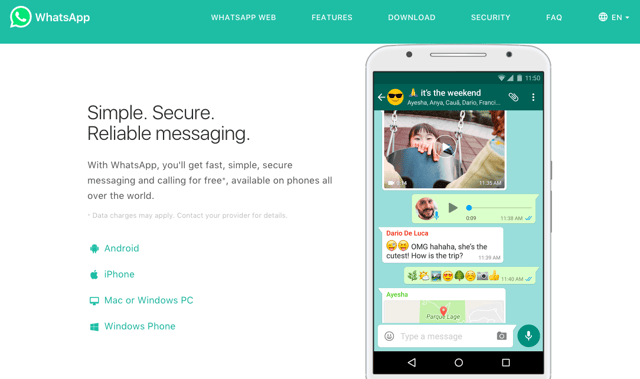
Monthly active users:1.3 billion
Most Popular Regions: Latin America, Europe, The Middle East, Southeast Asia, India, Russia, and Africa
Age Group: 25-44
Marketing Features:
WhatsApp doesn’t sell ads, prohibits third-party bots, and limits its broadcast message feature and group chats to 256 people. How are marketers supposed to leverage the most popular messaging app in the world then?
Since WhatsApp isn’t conducive to large-scale content distribution, marketers must take advantage of its one-to-one messaging capabilities. And by interacting with WhatsApp users like a normal user would, marketers can execute hyper-targeted and personalized campaigns.
In 2014, Hellman’s Brazil created WhatsCook, a live recipe service that connected people to real chefs. This wasn’t a service that just recommended recipes, though. It created recipes with the ingredients users already had.
After signing up for the service on their website, users would send a picture of their refrigerator's contents to WhatsCook. Then a chef would whip up a unique recipe using the person’s available ingredients and teach them how to cook it using pictures, videos, and other WhatsApp features.
Over 13,000 people people signed up for WhatsCook and each user spent an average of 65 minutes interacting with Hellman’s chefs. The service also received a 99.5% approval rating.
WhatsCook is a prime example of creative WhatsApp marketing. By attracting users with a helpful service, they engaged thousands of more people than they could by blasting content through a broadcast or group chat.
To start a service like WhatsCook, you just need users’ phone numbers or they can add your number to their contact list.
Fortunately, WhatsApp offers a click-to-chat link that you can embed in your website, email signature, or social profiles, allowing you to effectively promote your service.
2) Facebook Messenger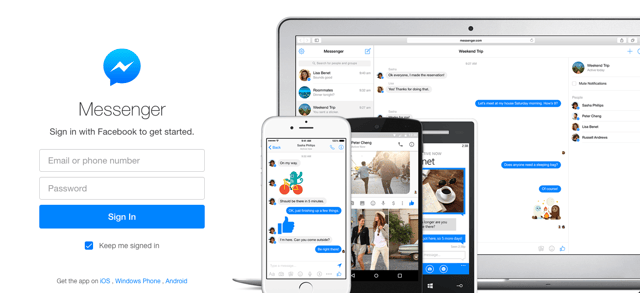
Monthly active users: 1.2 billion
Most Popular Regions: North America, Europe, Australia, The Middle East, South Asia, Southeast Asia, and Africa
Age group: 16-44
Marketing Features:
Facebook messenger offers brands a stockpile of marketing features.
For instance, you can serve destination ads in people’s newsfeed to drive them to your messenger and spark a conversation, send sponsored messages to people who’ve messaged you in the past, integrate messenger bots like Chatfuel and ManyChat to interact with customers, and more.
At HubSpot, we use chatbots to automate Facebook conversations with people. Whenever someone messages our Facebook account, our chatbot will message back with a menu of options.
People can then search and subscribe to our content, check out our software, look at job openings, ask for customer support, and manage their Facebook messenger blog subscription.
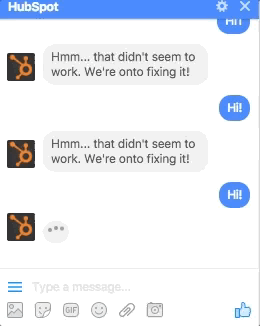
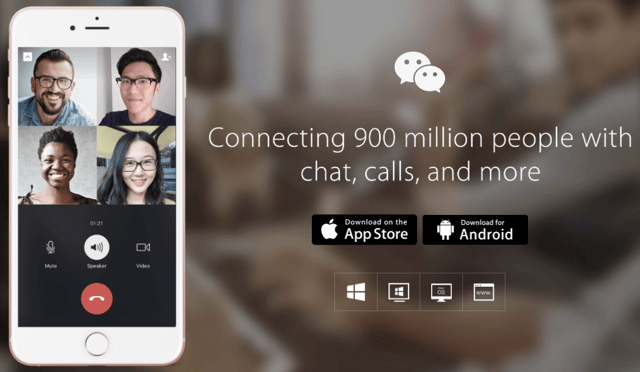
Monthly active users: 938 million
Most popular regions: China
Age Group: 18-50
Marketing Features:
WeChat isn’t just a popular Chinese messaging app. Most Chinese citizens use it to run their entire lives.
In one app, they can:
WeChat is China’s most popular messaging app for a reason. And it also provides marketers a lot of opportunity to engage and delight users.
But if you want to market to users in China, or 90% of the user base, your business must be registered in Mainland China.
Businesses based in the United States, Hong Kong, India, Indonesia, Macau, Malaysia, South Africa, Taiwan, and Thailand can only market to around 100 million of WeChat’s international users.
To establish a strong presence on WeChat, you should set up an official account for your business. This will allow you to create a company micro-site, publish content, and provide customer services all within the WeChat app.
There are two types of official accounts. Content publishers usually sign up for subscription accounts that let you broadcast one message per day to your subscribers in their subscription accounts folder.
Big retail chains usually sign up for service accounts that let you broadcast four messages per month to your subscribers in their friend session list.
Verified service accounts have access to 9 advanced APIs and WeChat payment. With access to these APIs, marketers can:
All accounts also offer bots that can interact with users and deliver keyword-triggered content.
BuzzFeed uses these bots to send WeChat users instant, personalized content whenever they message them a certain keyword like "dogs", "lol", or "fail".
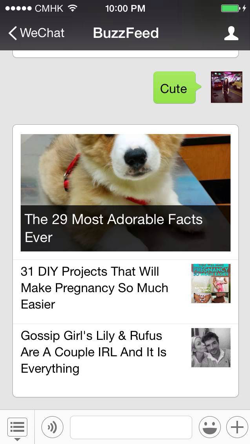
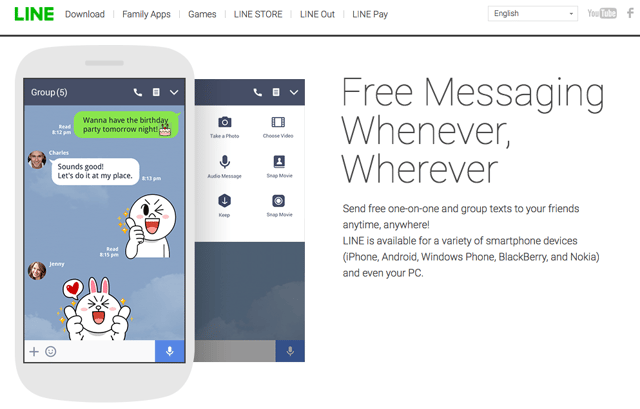
Monthly active users: 217 million
Most popular regions: Japan, Thailand, Taiwan, and Indonesia
Age group: 10-49
Marketing Features:
Line is a free messaging app that offers a profile page, stickers, games, video calling, music streaming, ride-sharing, and about 30 other features. It dominates Japan’s messaging app market, where 94% of messaging app users use the app.
Line is chock full of opportunity for marketers. In its four most popular countries, 73% of monthly active users use the app every day. This abundance of user engagement allows brands to build huge followings and boost engagement rates.
In fact, the Wall Street Journal acquired 2 million Line followers in only 15 months, which is the fastest social channel growth they’ve ever seen. They also claim that 30% of its followers like, comment, and share all their posts.
When brands sign up for Line official accounts, they can:
For Paul McCartney, Line is actually the best way to reach fans. His 12.5 million Line followers are more than all his Facebook, Twitter, and Instagram followers combined.
And since he can send private messages to each of his 12.5 million Line followers, he also engages with them a lot more than he can with his traditional social media following.
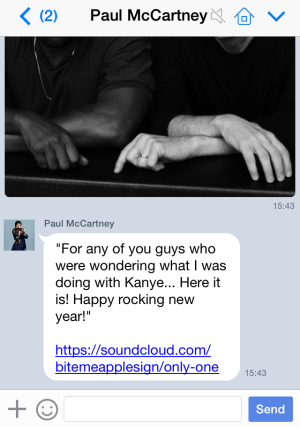
Photo Credit: TechCrunch
5) Slack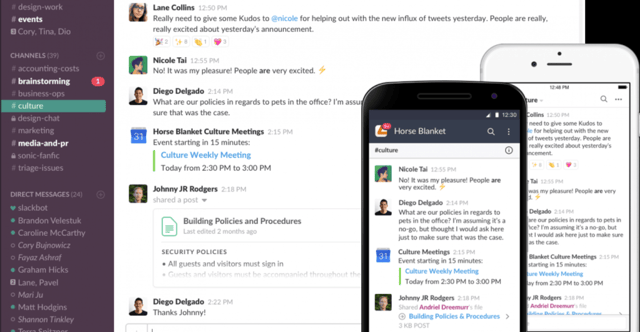
Daily active users: 5 million
Most popular regions: United States
Age group: 25-54
Marketing Features:
Slack is the main internal communications platform for many businesses. In fact, 77% of Fortune 100 companies use it. If you work in B2B, Slack could be your most targeted marketing channel.
At HubSpot, we knew Slack could be an effective content delivery channel, so we decided to offer a Slack blog subscription. When users sign up for it, they add the HubSpot Blog app to their Slack profile, where they receive a weekly broadcast of content. They can also search for content in the app.
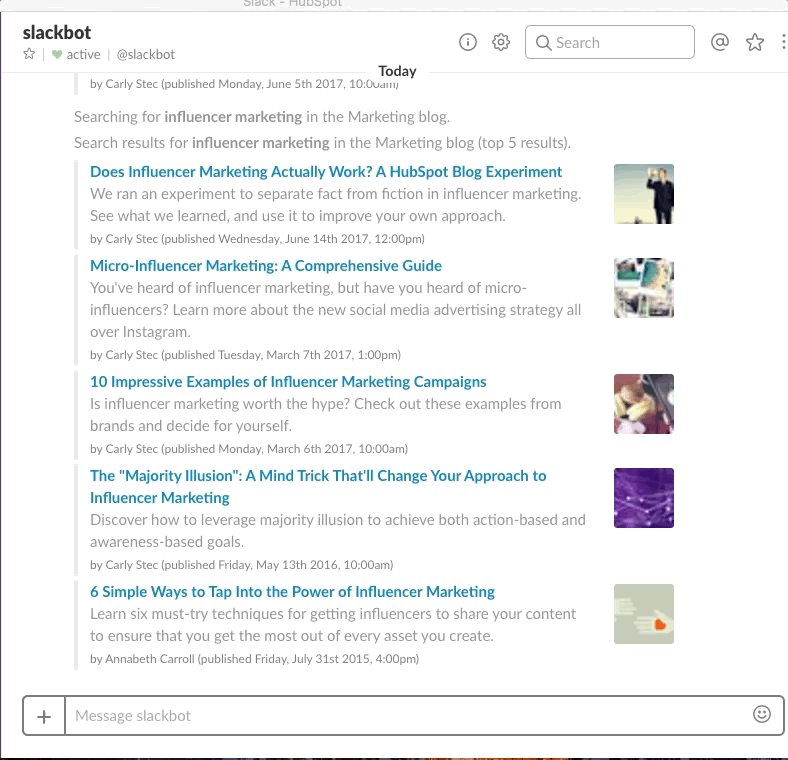
What messaging apps do you use for your marketing? Let us know on Twitter!

Comments
Post a Comment